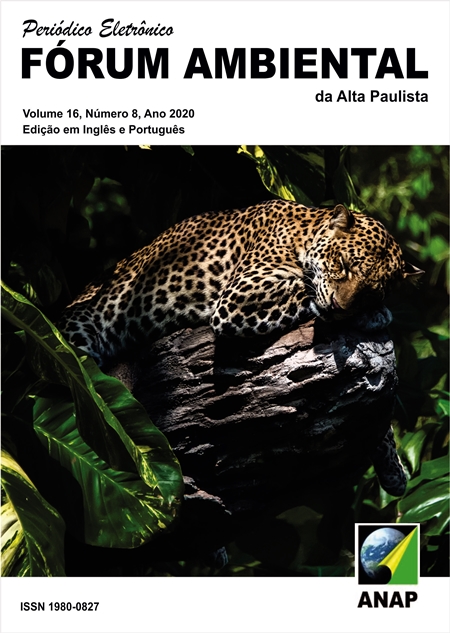Fire prevention through neighborhood analysis and remote sensing
DOI:
https://doi.org/10.17271/1980082716820202718Palavras-chave:
GIS. Flammability. FireResumo
Preventing fires is just as important as putting them out, if safely contained, it is possible to prevent them from becoming a tragedy. In this way, the present work offers a methodology to evaluate the potential of fire spread at the edge of corn crops. Due to the frequent occurrence of fires in Brazil, the proposal was applied to agricultural lands in the central west of Brazil Entre Rios and Maringá, located in Cristalina - GO. Data from the RESOURCESAT-1 and LANDSAT-5 satellites were used to determine land use and occupation maps. Using the NDWI index and temperature data from the LANDSAT-5 thermal band, the flammability potential of each property was determined. The relationship between land use and the potential for flammability resulted in fire risk maps. To assess the potential for fire spread, points spaced 1 km from the perimeter were selected, analyzed clockwise, in an area of influence of 800 m. The results showed that Entre Rios has a critical point occurrence rate of 7km with an efficiency against the spread of fires at the edge of 63%. Maringá presented a rate of 1km with an efficiency of 8%. Through the proposed methodology, it was possible to determine occurrence rates, critical points and edge efficiency in the land, thus we can conclude that the methodology proved effective in evaluating the potential of fire spreading in crops, allowing it to be applied to several regions of Brazil, avoiding fires in the rate that occurred this year.Downloads
Publicado
20-12-2020
Edição
Seção
Artigo Completo
Como Citar
FENGLER, Felipe Hashimoto; CARVALHO, Marcela Merides; PECHE FILHO, Afonso. Fire prevention through neighborhood analysis and remote sensing. Periódico Eletrônico Fórum Ambiental da Alta Paulista, [S. l.], v. 16, n. 8, 2020. DOI: 10.17271/1980082716820202718. Disponível em: https://publicacoes.amigosdanatureza.org.br/index.php/forum_ambiental/article/view/2718. Acesso em: 7 abr. 2025.












